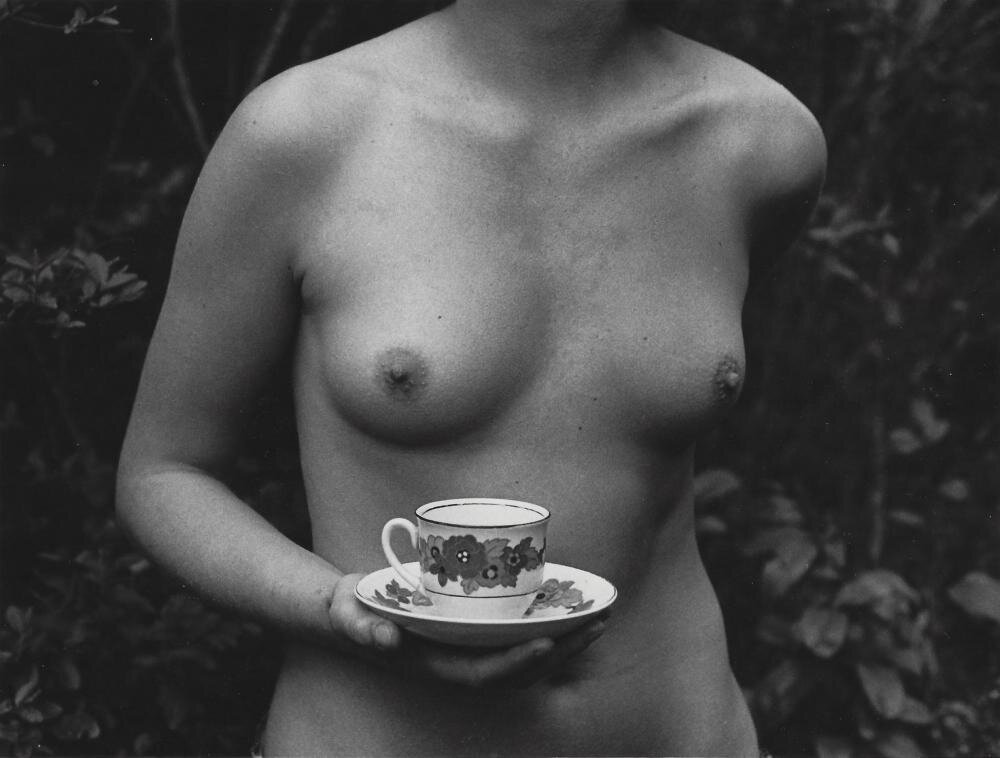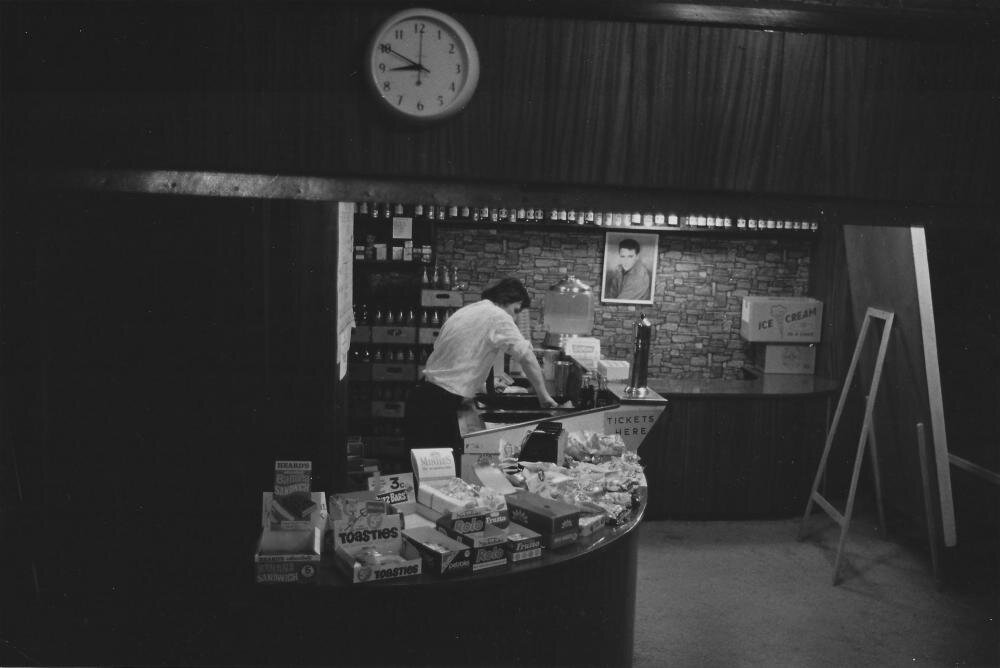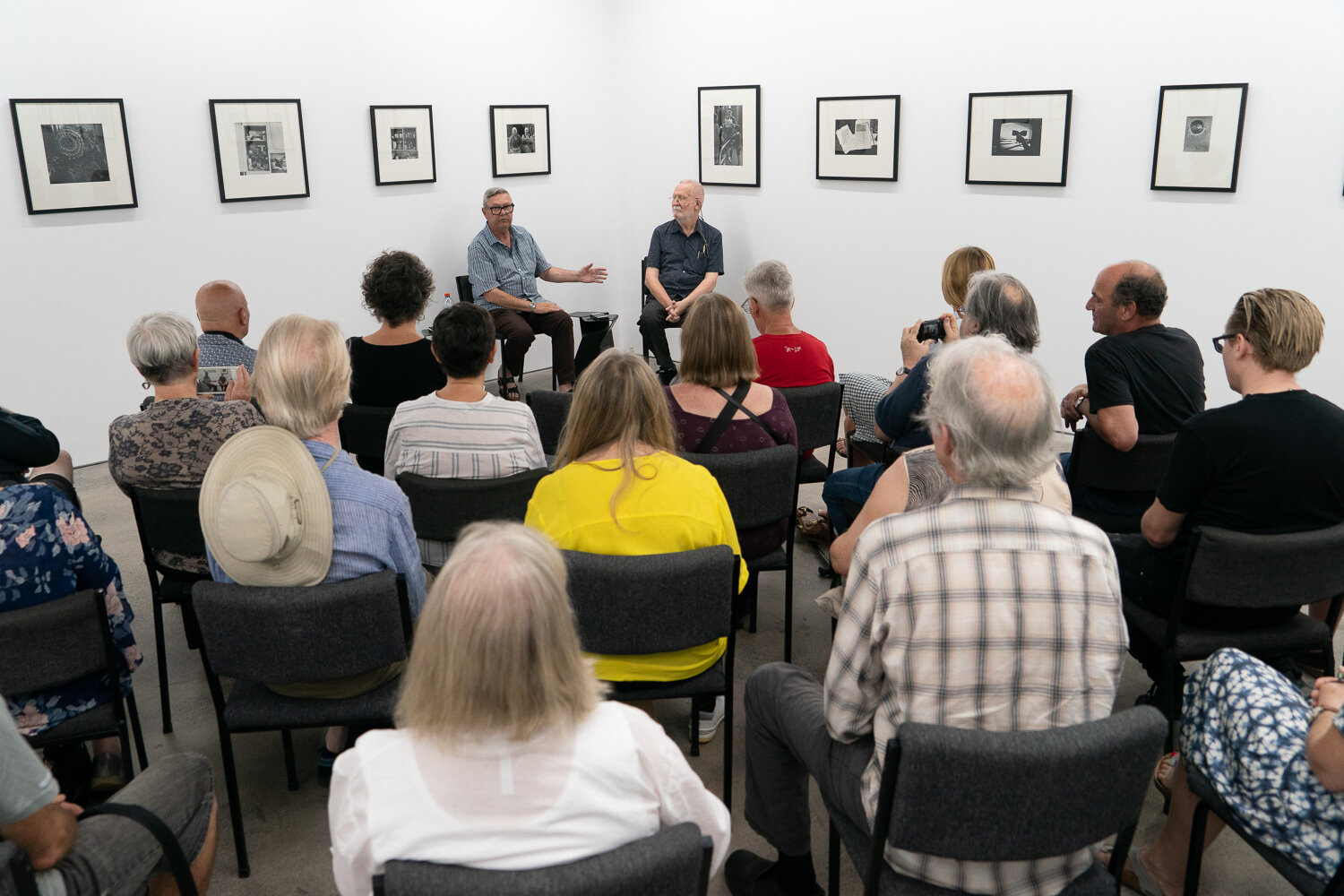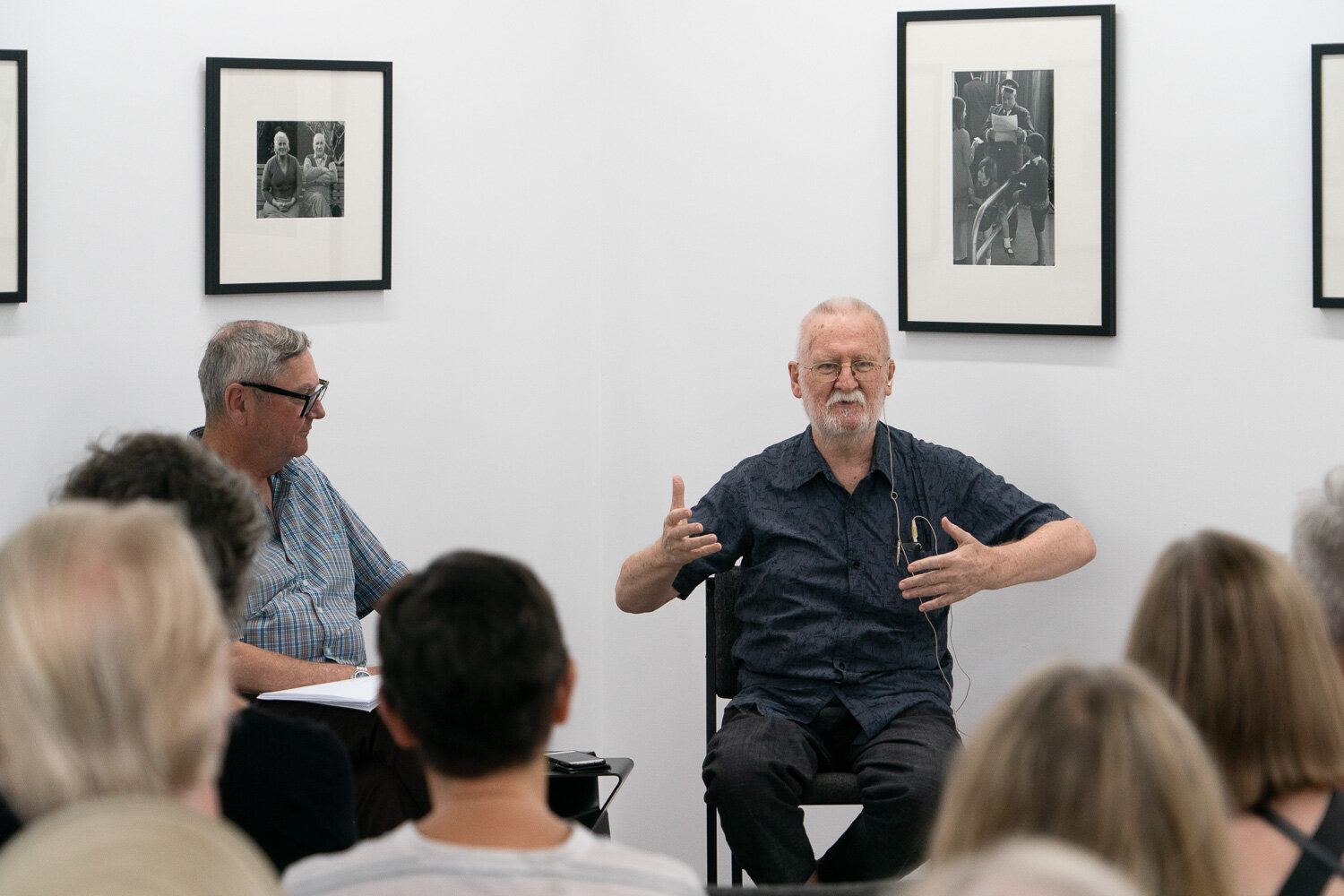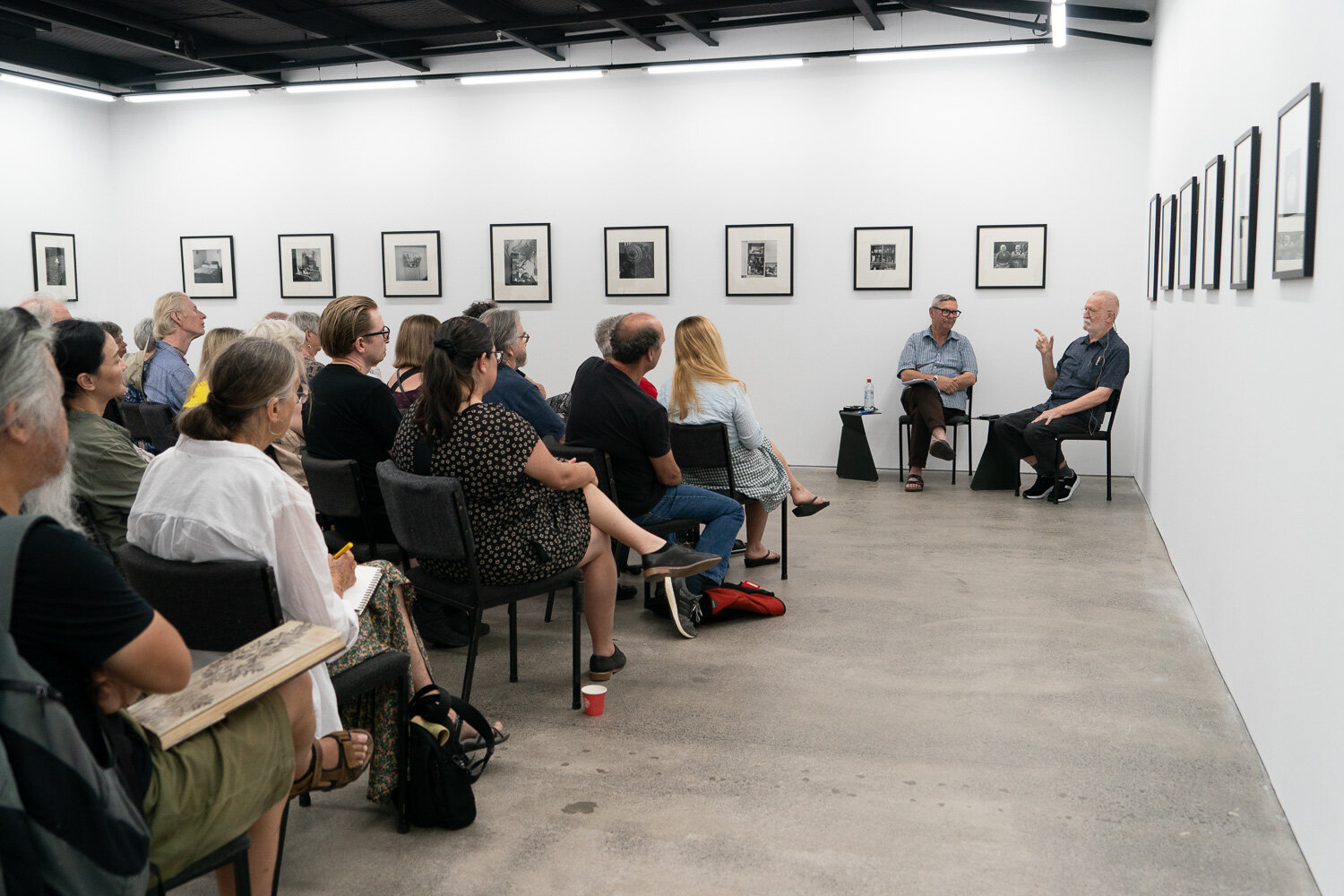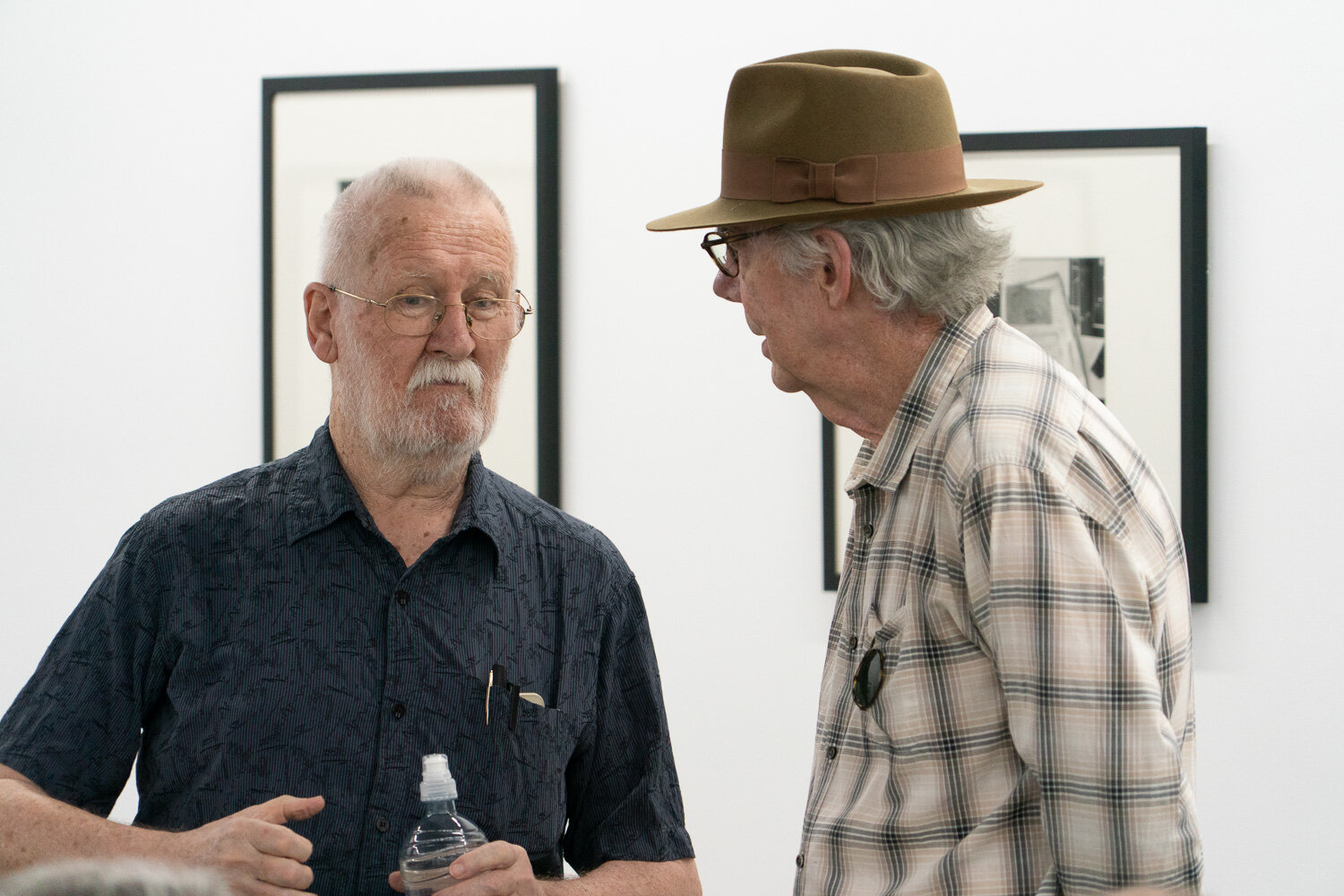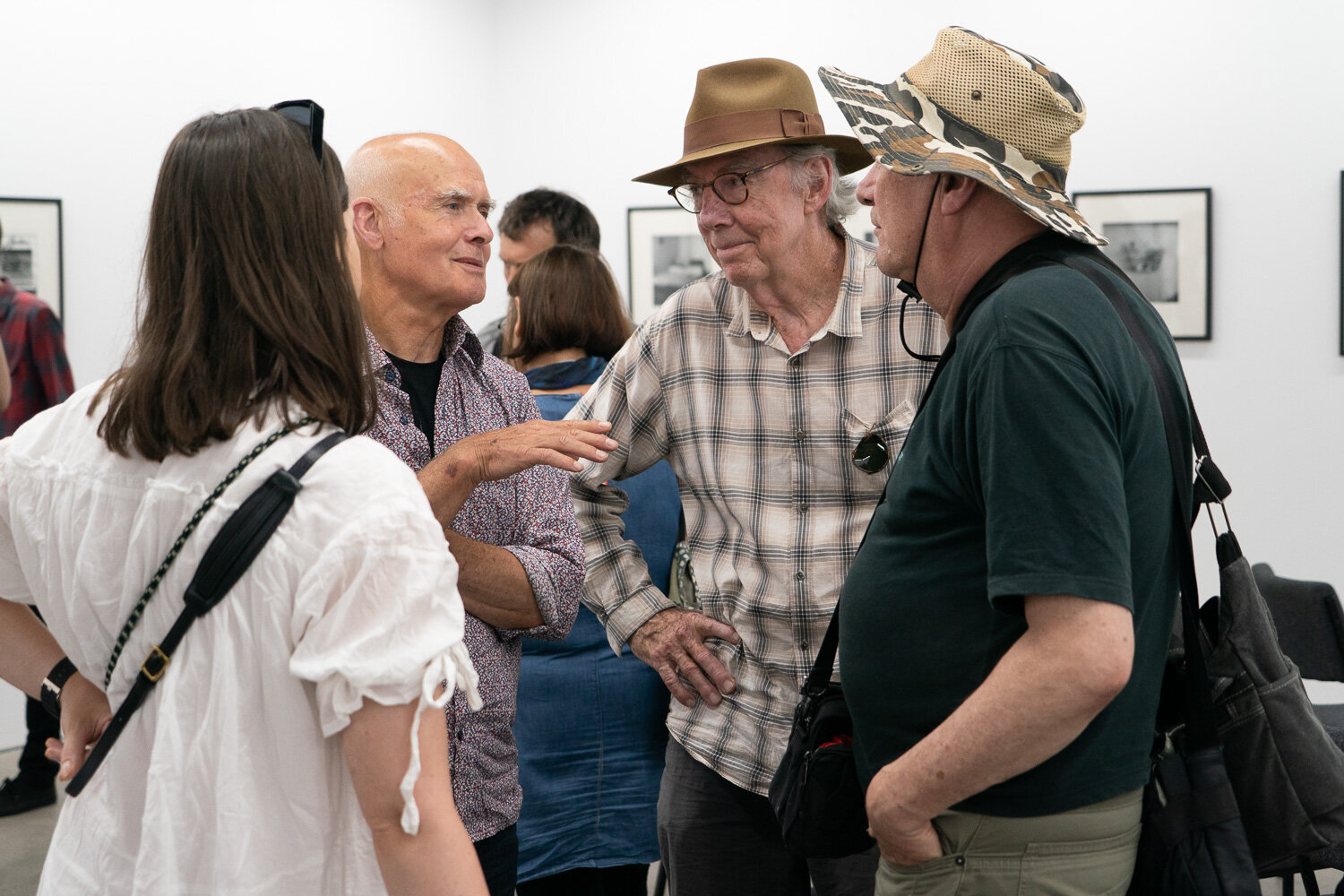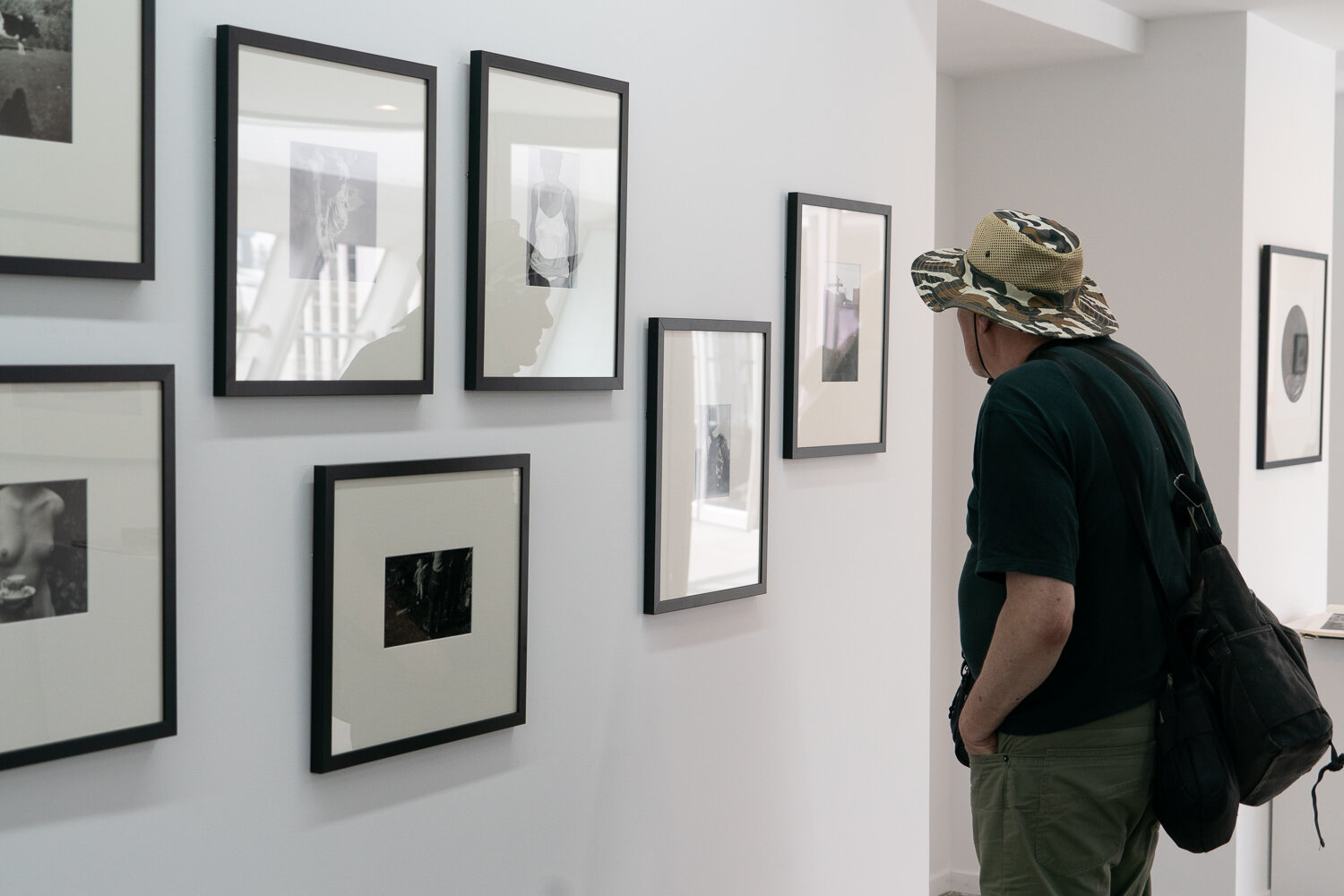Library & Laboratory
Library & Laboratory
John B. Turner
Burton Brothers, William Tyree, Daniel Louis Mundy, James Valentine, Herbert Deveril, Peter Peryer, John Fields, Bryony Dalefield, Glenn Busch, George Silk, Megan Jenkinson, Peter Black, Anne Noble, Theo Schoon, Les Cleveland, Gary Baigent, Robin Morrison, Allan McDonald, Richard Collins, John Morris, Daniel Manders Beere, John S. Daley, George Valentine, Mac Miller
Bowerbank Ninow
Level 9, 10 Lorne Street, Auckland
30 January – 22 February 2020
Opening Thursday 30 January, 6 - 8pm
John B. Turner will be in conversation with Ron Brownson at 1pm on Saturday, 01 February
John B. Turner, My print of Edward Weston's 'Civilian Defense' (1942) in shattered frame, Mount Eden, Auckland, 1976
gelatin silver print, 145 × 220 mm
This exhibition consists of three parts: a group of photographic works by Turner, taken between 1966 and 1989, a selection of photographic prints from Turner’s personal collection, and a small part of his extensive library of photography books. Library & Laboratory aims to celebrate and examine the substantial contributions made by Turner to the cause of photography in New Zealand, particularly as a champion of the role of the artist-photographer.
Accompanying the exhibition will be an artist’s talk, where John B. Turner will be in conversation with Ron Brownson at 1pm on Saturday, February 1st. They will discuss topics related to Turner’s work as an advocate for, and scholar of, New Zealand photography, as well as his own photographic practice.
In the introduction to his 1966 book The Photographer’s Eye, John Szarkowski writes that “photography—the great undifferentiated, homogeneous whole of it—has been teacher, library, and laboratory for those who have consciously used the camera as artists.” This idea—that photography, existing as a totalised field, might be worth looking at and learning from—seems self-evident now, but it is worth remembering that the idea of photography as a fine art medium, let alone a distinct way of seeing and thinking about the world, was still in its comparative infancy in New Zealand in 1970, when John Turner began to co-edit the newsletter Photographic Art & History with Bruce Weatherall, a collaboration that ultimately led to the founding of Photo-Forum Inc. in 1973.
Peter Peryer, Catherine and the Teacup, 1974
gelatin silver print, 160 × 215 mm
Prior to 1970, the primary means by which New Zealand photographers could share and critique one another’s work were the regional camera clubs, operating under the aegis of the Photographic Society of New Zealand. These were largely comprised of amateurs and hobbyists and were squarely oriented towards the creation of images that would conform to traditional ideas about composition and subject matter. Likewise, the existing professional photography groups were focused on commercial applications of the medium such as wedding, fashion or advertising photography, where technical precision and craft necessarily superseded artistic merit. Turner’s idea was to launch a platform that would empower photographers who wanted to engage with the medium as artists, following the model of American and European publications such as Aperture, Swiss Photography and Creative Camera.
A few years before the launch of the PhotoForum magazine, Turner accepted a position as a lecturer at the Elam School of Fine Arts. According to Turner, Tom Hutchins had pushed for him to be brought onto the faculty based on his “experience, enthusiasm, personal library and a Certificate of Proficiency in motorcycle riding.” Jokes aside, Hutchins’ intuition about Turner’s suitability was proved correct; between his work fostering a younger generation of photographers as a lecturer, his editorial role at PhotoForum and his instigation of an open summer photographic workshop program, Turner’s influence on the development of New Zealand art photography was considerable. It is possible to see him during these years as a fulcrum around whom many significant people, events and ideas revolved. Both Turner’s skill as an organiser and his seemingly inexhaustible enthusiasm for photography allowed him to cultivate a “scene” that was to prove incredibly prolific, helping to foster the careers of artists such as Anne Noble, Peter Peryer and Glenn Busch.
John B. Turner, Kitchen safe, Lower Hutt, 1969
gelatin silver print, 285 × 280 mm
Aside from his role as a teacher and community builder, Turner quietly continued to pursue his own photographic practice, but seldom exhibited work. He counts as influences a range of photographers, including the great names of the American modernist canon such as Edward Weston, Ansel Adams and Minor White, as well as documentary notables such as Eugene Atget, Dorothea Lange and Walker Evans. Both his scholarly and photographic practice were influenced by the writings of curators and critics such as Beaumont and Nancy Newhall, Nathan Lyons and David Vestal. Turner’s determination to pursue a rigorous, critically-minded approach to image-making in line with that of his international contemporaries is apparent in the work he produced during the sixties and seventies.
The way Turner had internalised the lessons of the American photographic canon, works he had seen primarily through reproductions in books, is apparent even in early works such as Abstract (Cherry Blossom), Waiwhetu, Lower Hutt (1967). Here, a close-up of branch and trunk becomes a vaguely bodily study of light and shade, setting the textured bark of the tree against a soft, indistinct background that lends it an odd intimacy. The flattening of the picture plane apparent in this image is reminiscent of that seen in Edward Weston’s nature studies, an effect that Turner was no doubt interested in replicating for his own purposes.
Theo Schoon, untitled, c.1950 - 1960
gelatin silver print, 180 × 180 mm
However, perhaps the most significant aspect of Turner’s practice is not the lessons he learned from international models, but the way he applied those lessons to New Zealand subject matter. The resulting works speak eloquently about the material culture, socio-economic tensions and national self-image of mid-twentieth-century New Zealand, without falling into the traps of sentimentality or regionalism. Works such as Movie Theatre, Kingsland (1973) or Kitchen Safe, Lower Hutt (1969) imbue ephemeral, everyday scenes (the movie clerk leaning across his counter in an empty foyer, a cupboard door left standing ajar) with a solemnity and sense of purpose that elevates them and makes them somehow both monumental and urgent. Other works have a more playful demeanour, such as the Barber-Tobacconist, Kingsland (1972), whose towering wall of cigarettes and shaving products renders him a vaguely comical totem of capitalist enterprise.
The second part of the exhibition shows Turner in his capacity as a collector and archivist. Turner’s extensive personal holdings of photography include works by his contemporaries, historical photographs of New Zealand and works by international photographers. Being able to view works from Turner’s collection alongside his own photography affords the viewer a rare opportunity to more fully appreciate the context of both bodies of work.
John B. Turner, Movie Theatre, Kingsland, 1973
William Garnett’s Salt #1, Death Valley (1954) is a brilliant example of this pioneering aerial photographer’s early work. Although his work was featured in mainstream print magazines such as Life and Reader’s Digest, to a contemporary eye Garnett’s work seems clearly modernist in construction, reducing the landscape to a flattened, finely orchestrated abstract composition. The formal qualities of this image no doubt appealed to Turner and are reflected in many of his own works.
The collection also points towards Turner’s role as a historian of New Zealand photography, who both collected and wrote about the works of nineteenth-century photographers such as the Burton Brothers, Josiah Martin, Arthur Northwood and others. His role in preserving and celebrating the works of these early photographers has been considerable. In particular, he curated two noteworthy exhibitions in 1970: Nineteenth Century New Zealand Photographs for the Govett-Brewster Art Gallery, which toured nationally, and Maori in Focus: Photographs from the Dominion Museum from 1885–1923 at the Palmerston North Art Gallery, with director Ian North. Both shows had a substantial effect on public interest in the historical underpinnings of New Zealand photography.
Megan Jenkinson, Maketu Hot-Pools II, 1978
hand-coloured silver gelatin print, 140 × 210 mm
Lastly, Library & Laboratory contains a selection of books from Turner’s personal library. Books were the main channel by which New Zealanders could access and learn about international photography for the majority of the twentieth century, and Turner’s collection was a valuable source of inspiration and information for many aspiring New Zealand artists, thanks to his generous lending practices. These books offers another avenue through which Turner’s practice can be explored and appreciated. Turner’s books served as a conduit for bringing international photography into New Zealand, and this exhibition is a chance to own part of the library that was such a crucial feature of the early art photography scene in this country.
Turner’s curiosity, humour and love for the medium of photography are evident in both the substantial body of serious photographic work that he produced, and in the critical rigour with which he undertook the tasks of collecting, appreciating and writing about photography and photographers. The connecting thread throughout Turner’s life and work has been a delight in the possibilities of photography as a means of both communication and expression. In his own work, Turner undertook to document neglected and ephemeral aspects of New Zealand life for posterity, creating a body of artistic work that functions as both a record and a translation of that record, reconfiguring bare description into subtle visual poetry.
https://www.facebook.com/bowerbankninow/posts/2807925039267217?__tn__=K-R
Photographs by PhotoForum from the artist talk at Bowerbank Ninow, 01 February 2020


